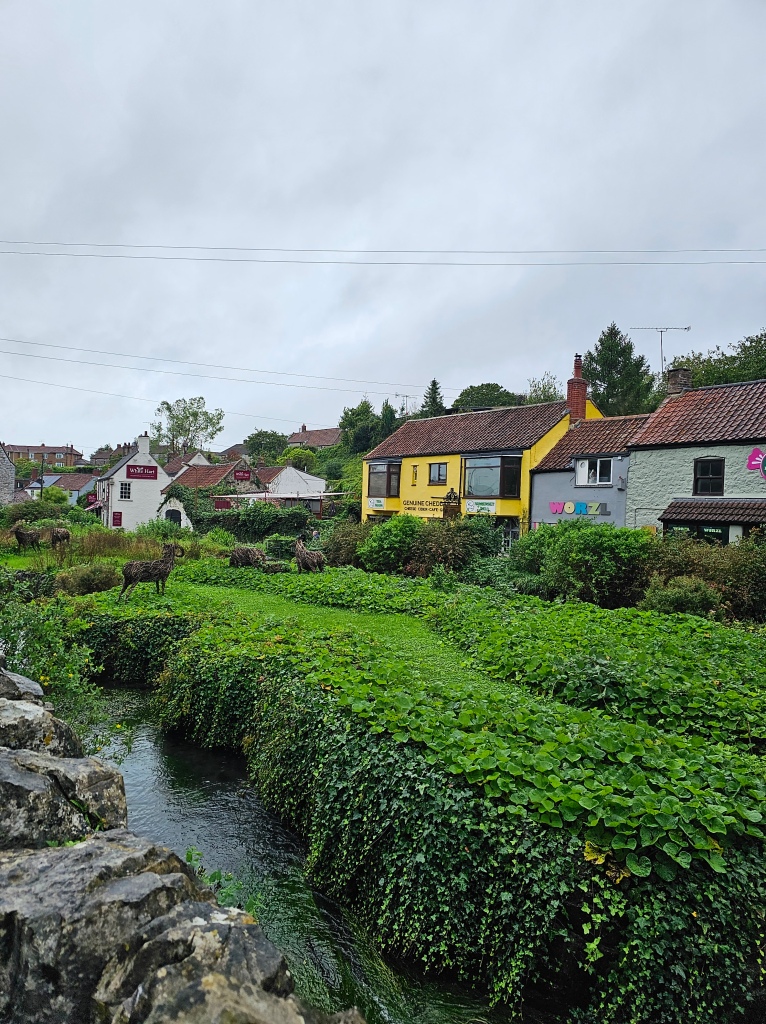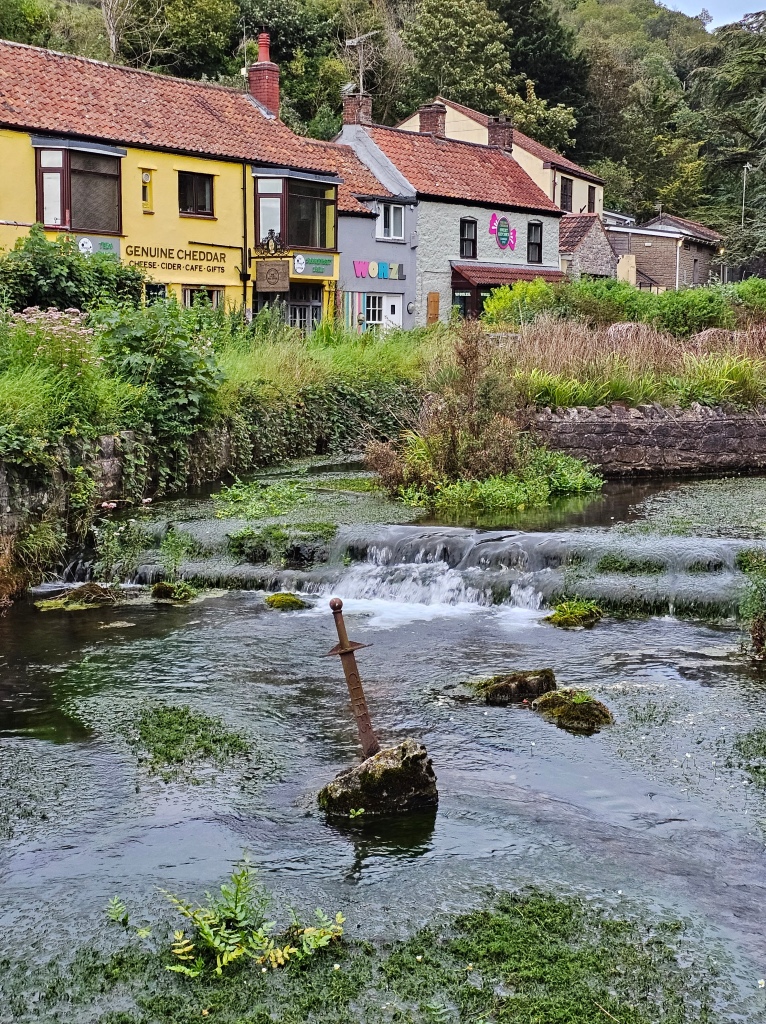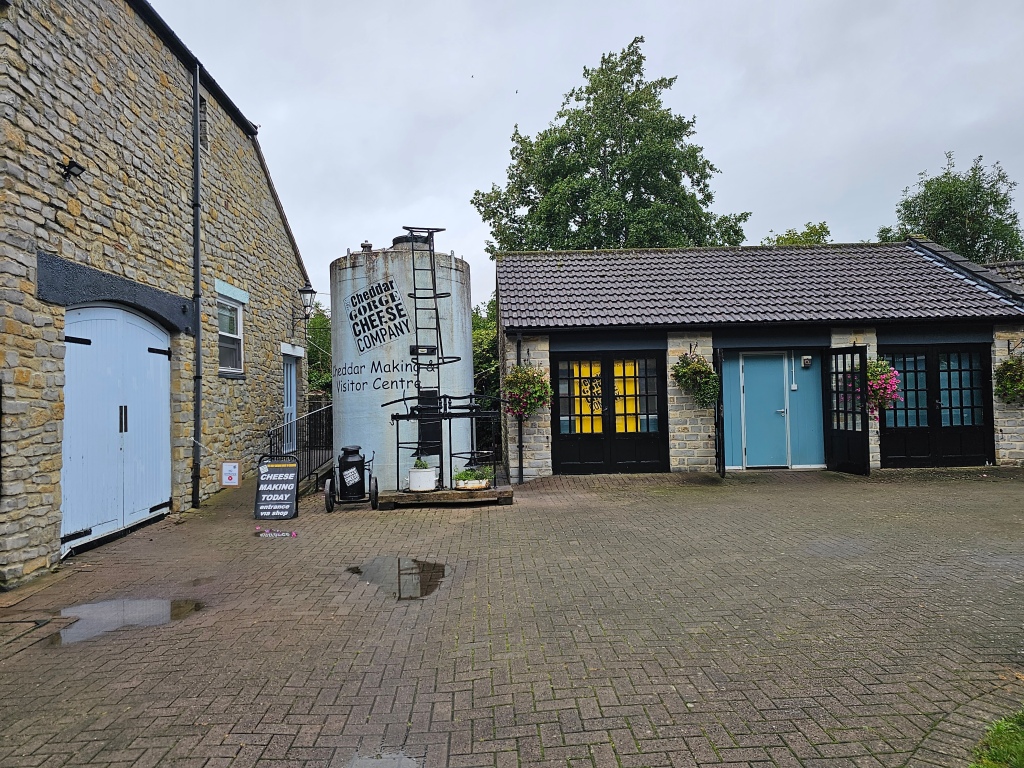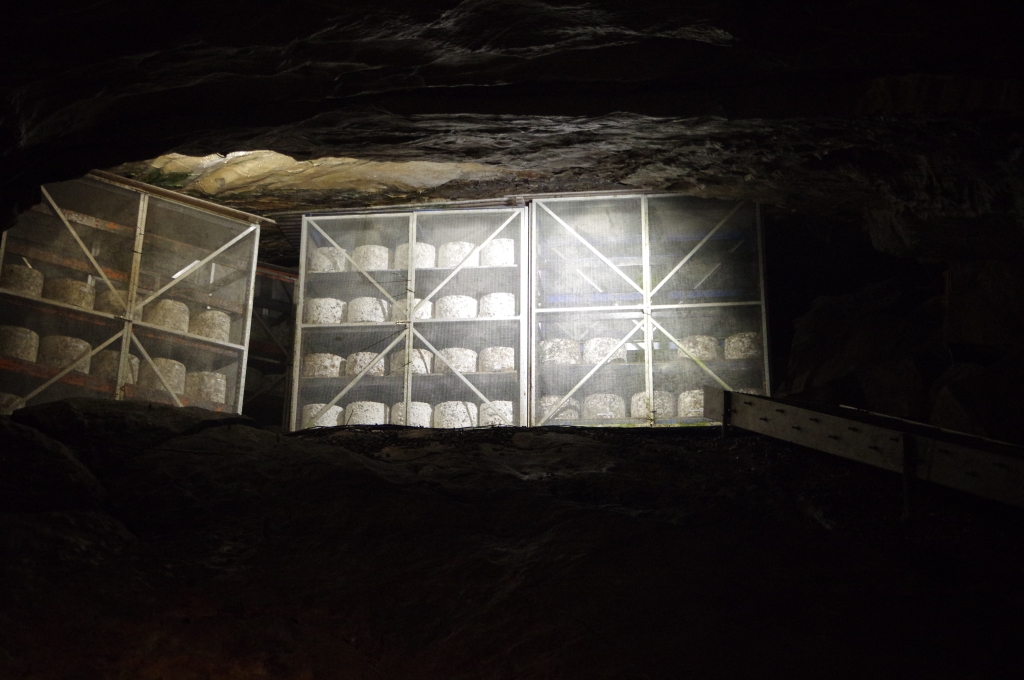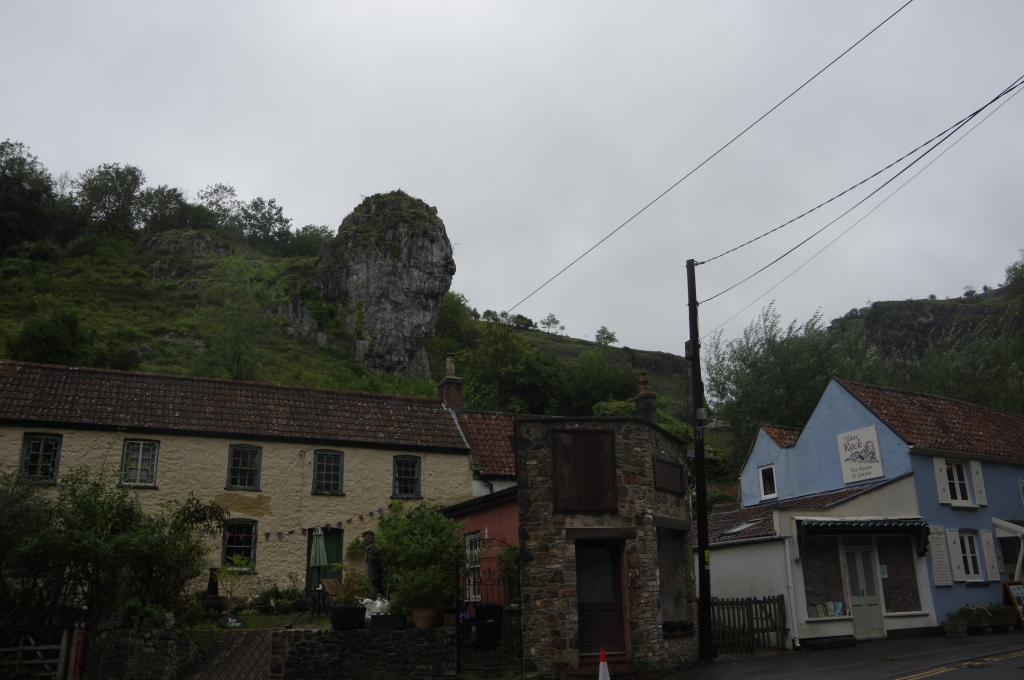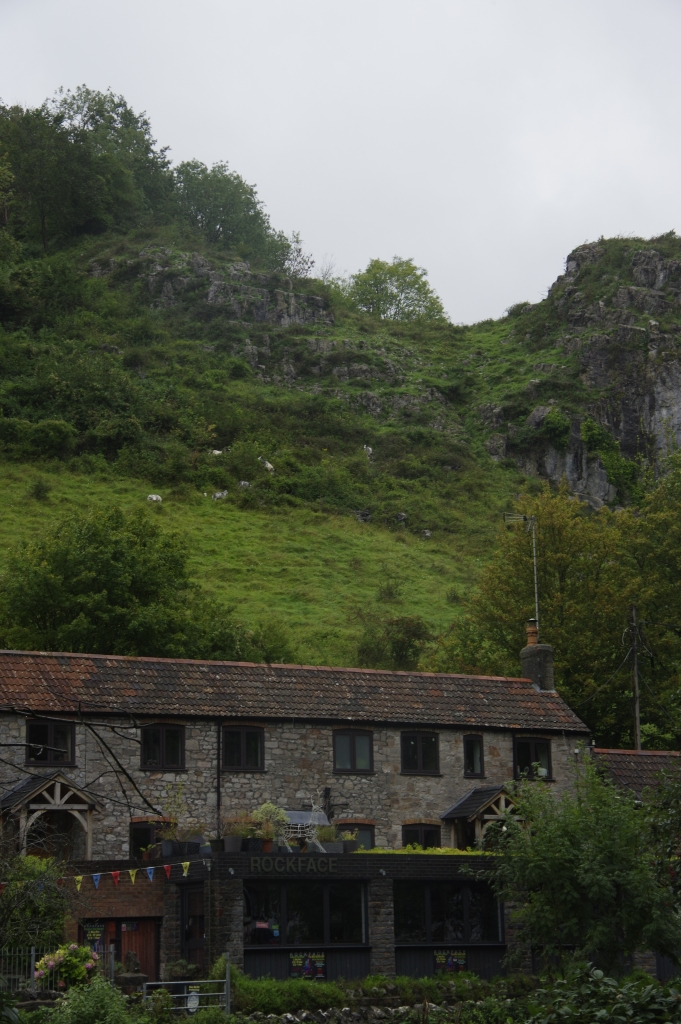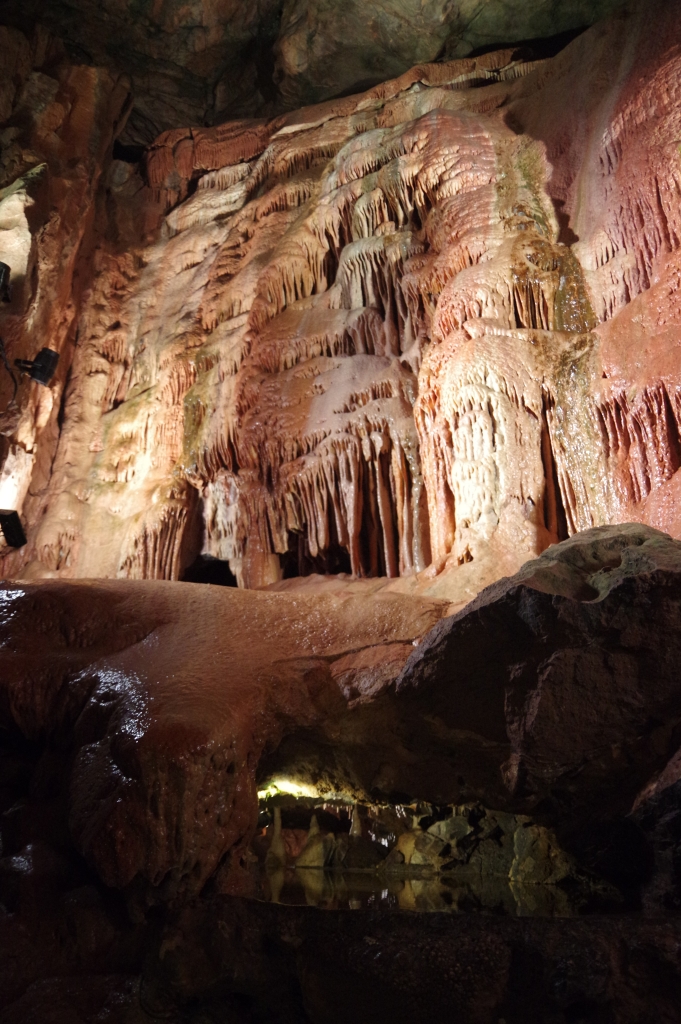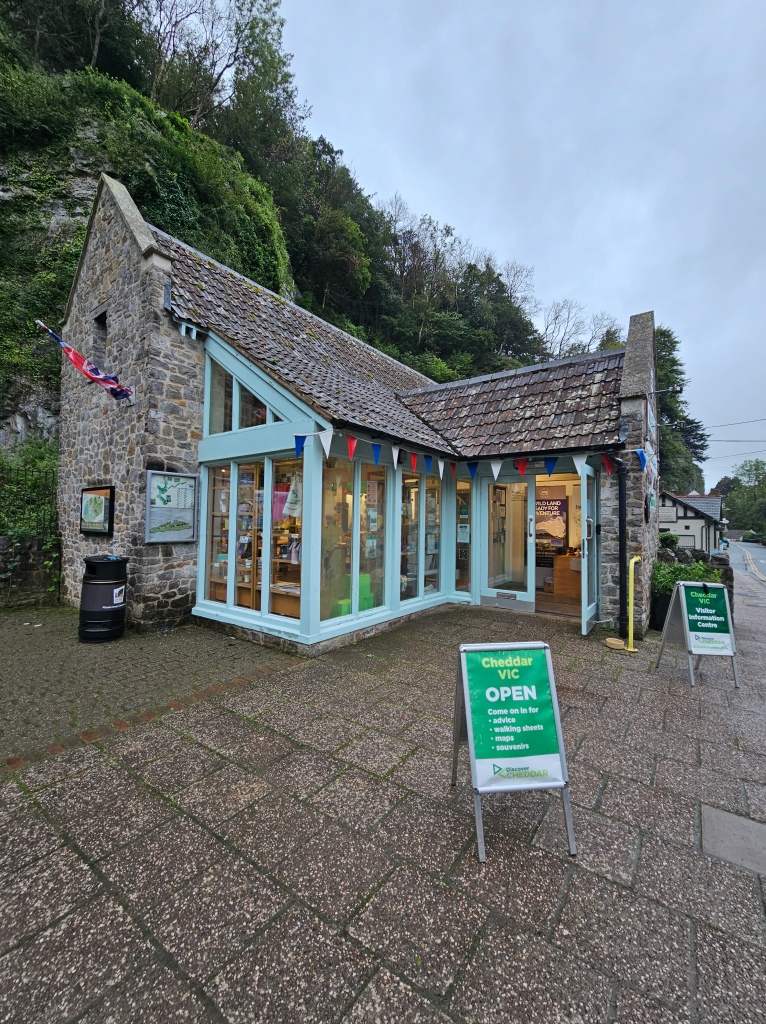When we were planning our UK road trip, I knew that Cheddar was the one place that I wanted to go (besides our final destination of Nottingham). I know it seems like a random destination but in my spare time, I teach classes on pairing beer with cheese, and in these classes I talk about the origins of the different beers and cheeses that I am pairing. I often use cheddar in my pairings and have weaved tales of cave-aged cheddar in Cheddar so much that I had built the place up in my head as a MUST VISIT destination. I wanted to see the caves where the sharp, salty, cheese of my dreams has been made for centuries. So, after we picked up our rental car at London Heathrow (LHR), and made a visit to Stonehenge, we found ourselves in the village of Cheddar, ready to explore.

History
Cheddar is a picturesque village located in Somerset, England that boasts a rich and fascinating history dating back to ancient times. The settlement’s name can be traced to the Old English word “ceodor,” meaning “deep dark water,” which aptly describes the famous Cheddar Gorge and the underground caves in the region.

Cheddar has been inhabited since the Iron Age, and evidence of Roman and Saxon presence has also been discovered. In the Middle Ages, Cheddar was a thriving market town and was known for its production of the world-renowned Cheddar cheese.
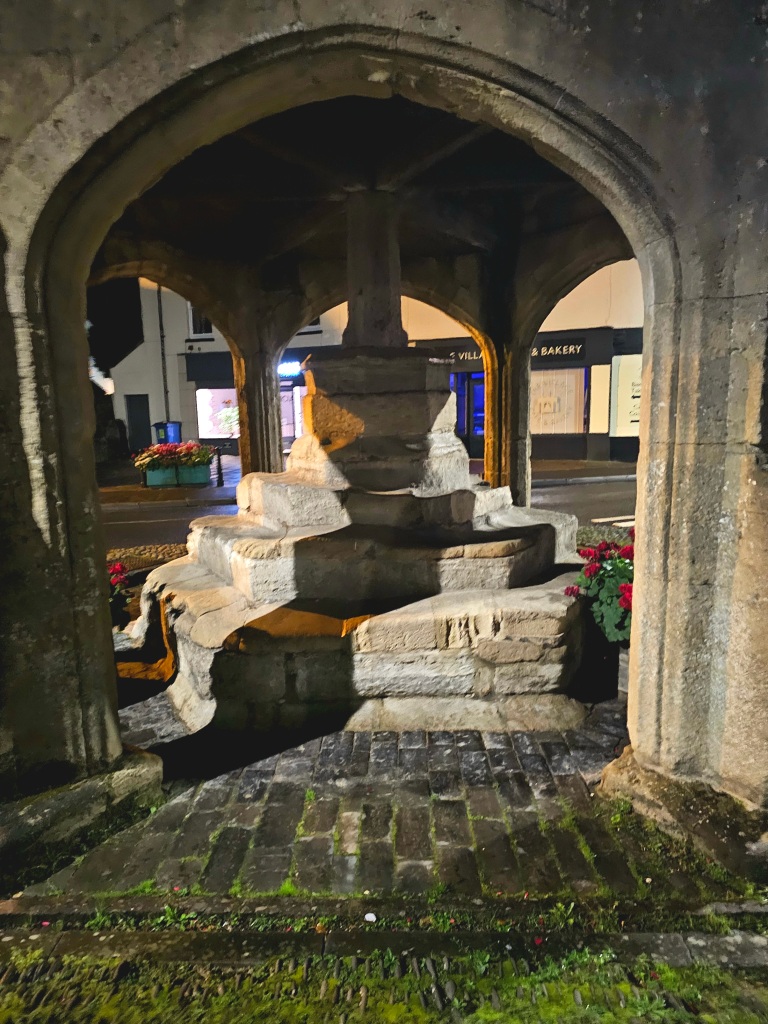
The Cheddar Gorge, with its dramatic limestone cliffs, has been a natural wonder and a site of geological importance for centuries, attracting visitors and explorers from around the world.
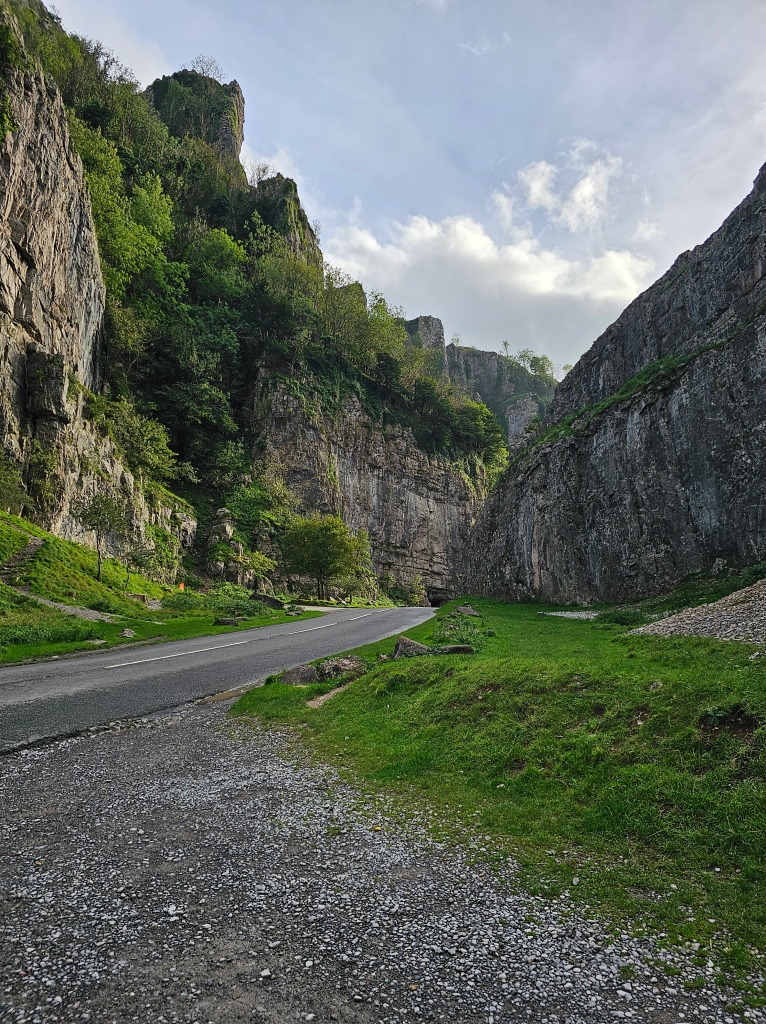
Today, Cheddar is a popular tourist destination, offering a captivating blend of history, stunning landscapes, and, of course, the delectable cheese that has made it famous worldwide.
Cheddar Gorge
We entered Cheddar via a scenic drive through the Cheddar Gorge, celebrated for its stunning geology and vibrant ecosystems. The gorge was formed during the last Ice Age, approximately 1.2 million years ago, through a combination of glacial meltwater and erosion, resulting in the breathtaking limestone cliffs and caves that we got to see on this trip.
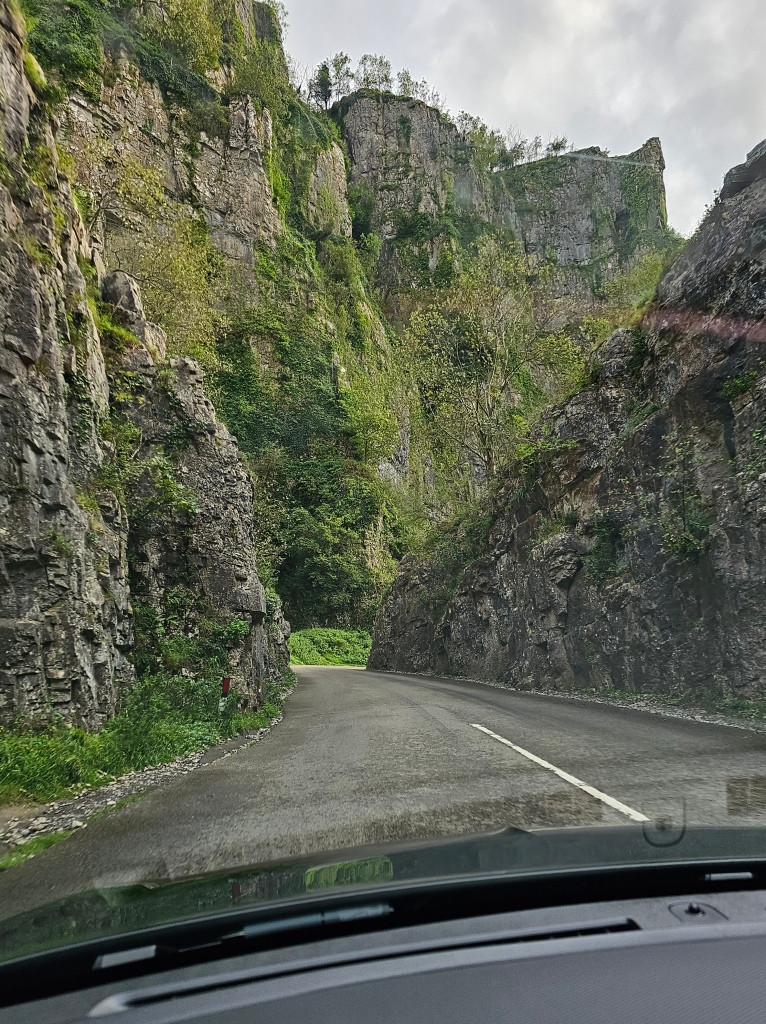
The diverse flora and fauna of Cheddar Gorge are equally captivating. The limestone rock faces host a unique array of plant species, including rare alpine plants that thrive in the nutrient-rich soil. The gorge is also a haven for wildlife, with peregrine falcons soaring above, while the caves beneath shelter a variety of bats.
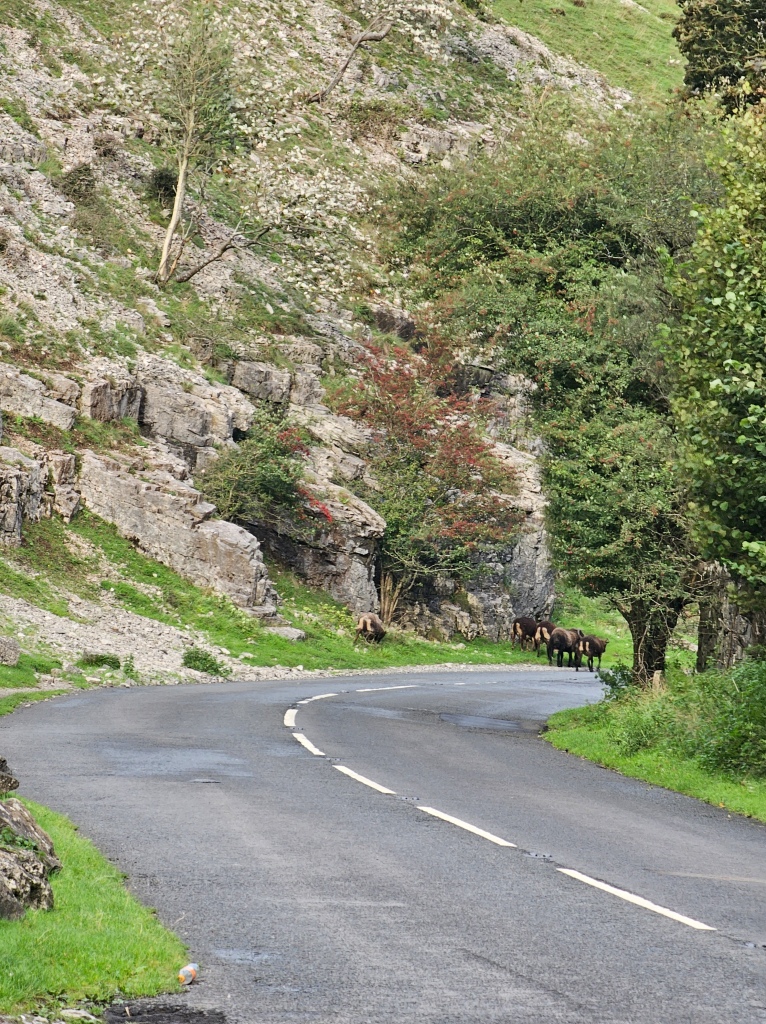
While taking one of the final blind bends before arriving in the village, we came across a group of goats crossing the road. I was so tickled that we pulled over just to watch them for a little bit.

First, Cheese
Cheddar cheese, which bears the name of Cheddar holds a history as rich and flavorful as the cheese itself. This world-renowned cheese is thought to have been produced in the region for over a thousand years. It’s believed that the unique conditions in Cheddar, including the local caves, played a vital role in the maturation and flavor development of the cheese.
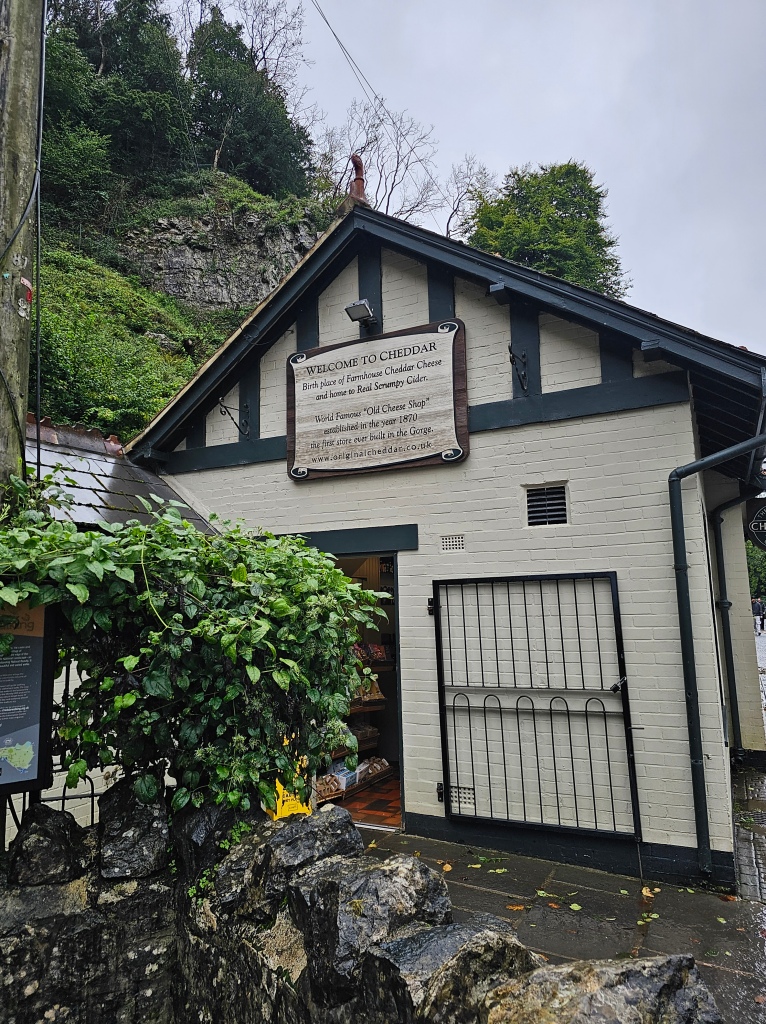
The journey to crafting Cheddar cheese starts with fresh cow’s milk. Starter cultures of bacteria are introduced to the milk, kickstarting the fermentation process. Rennet, an enzyme, is then added to coagulate the milk, forming curds.
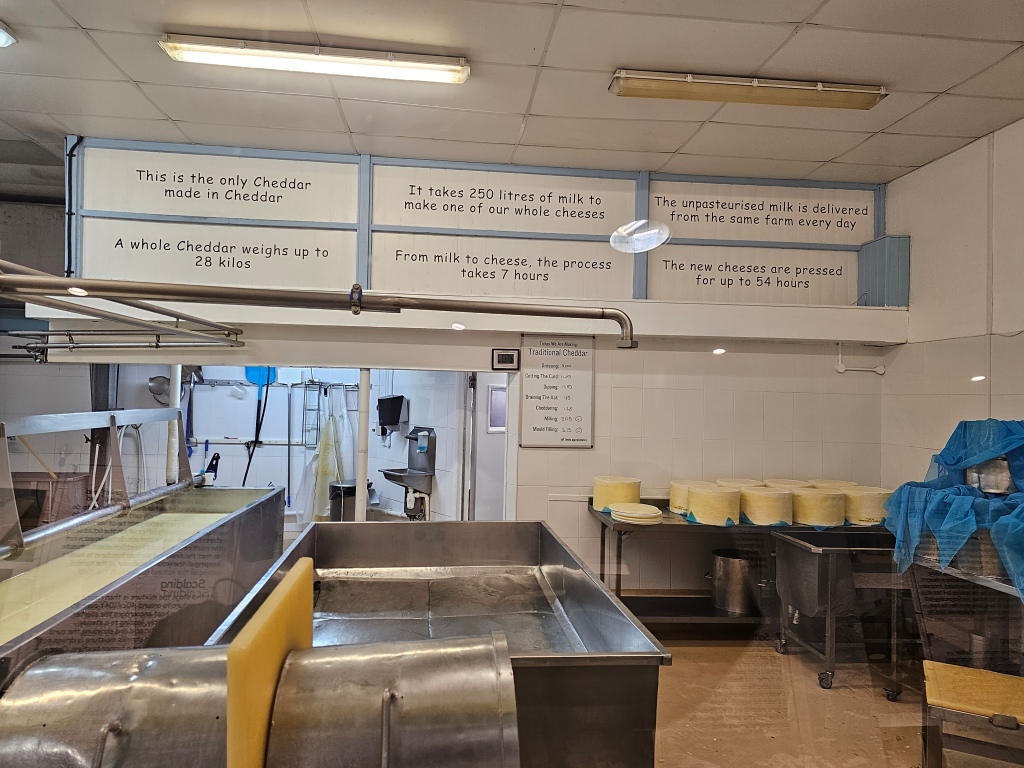
Once curds form, they undergo a unique process called “Cheddaring.” During Cheddaring, the curds are cut into small pieces and gently heated. This process encourages further whey expulsion and the formation of a dense curd mass. The curds are then drained and placed into molds, which are pressed to remove more whey and shape the cheese.

Following the Cheddaring process, salt is added to enhance the cheese’s flavor and assist in preservation. Finally, the Cheddar cheese is left to mature for a period ranging from several months to years, during which it develops its distinct flavor and texture, resulting in a wide range of Cheddar cheese varieties, each with its own unique characteristics.

Today, Cheddar cheese is still produced in the area, with a few renowned dairies continuing the tradition. Some of the notable Cheddar cheese producers in Cheddar and the surrounding Somerset region include the Cheddar Gorge Cheese Company and the Wyke Farms, which have earned international acclaim for their commitment to crafting high-quality, authentic Cheddar cheese. Visiting these local dairies allows you to not only taste the cheese but also delve into the history and artistry of Cheddar cheese-making, connecting with a heritage that stretches back centuries.
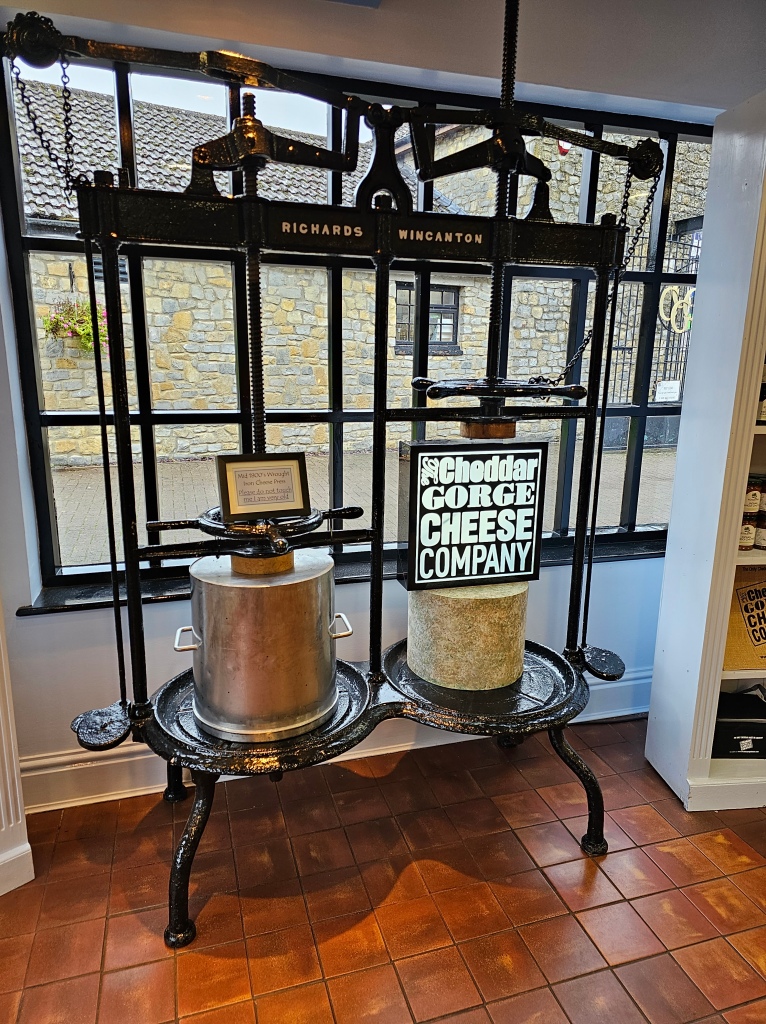
On our visit, we took a tour of the Cheddar Gorge Cheese Company. The tour is self a self guided walk through the cheddar making process. There is a window where you can watch as they go through the different cheese making steps and a white board in the tasting room with times on it that let you know when each process will approximately take place, just in case you are dying to see them add the rennet. The tour begins and ends in the tasting room and cheese shop. Before and after our brief tour, we tasted our way through all of their offerings and left with a few cheeses to take for the hotel in a branded cooler bag. The tour is £3.50 and worth it to sate any curioustiy that you might have. The Cheddar Gorge Cheese Company is the only producer of cave-aged cheese in Cheddar currently, you can see the cheese being aged in Gough’s Cave, and you can taste and buy the cave-aged cheddar in their tasting room and shop.
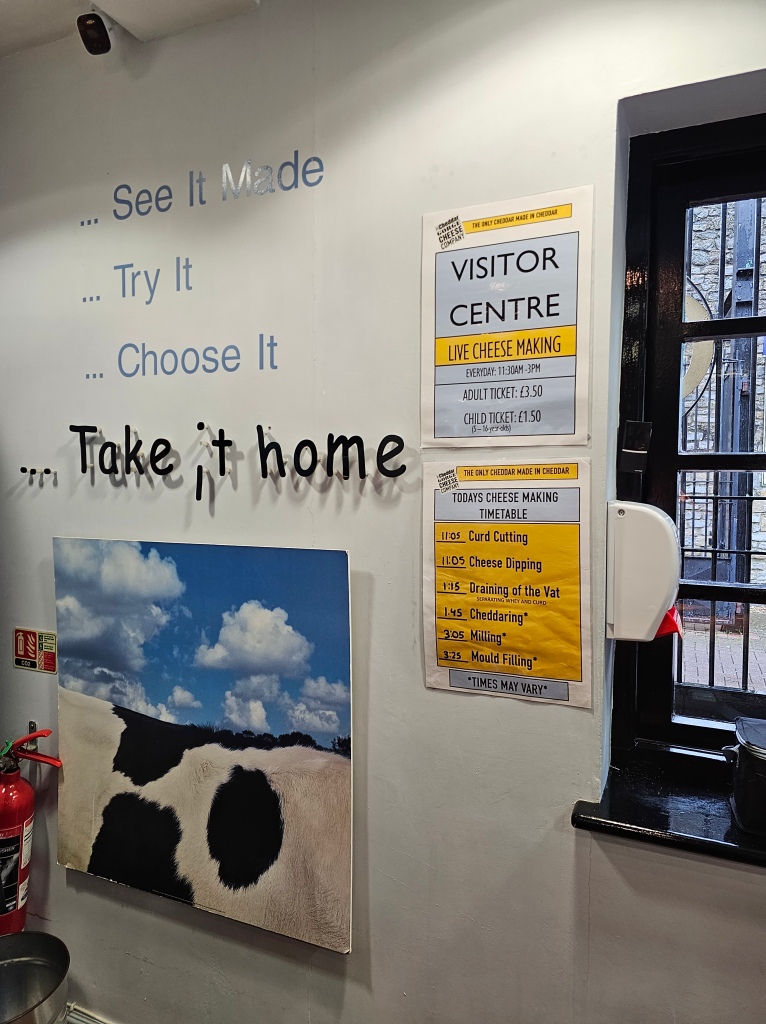
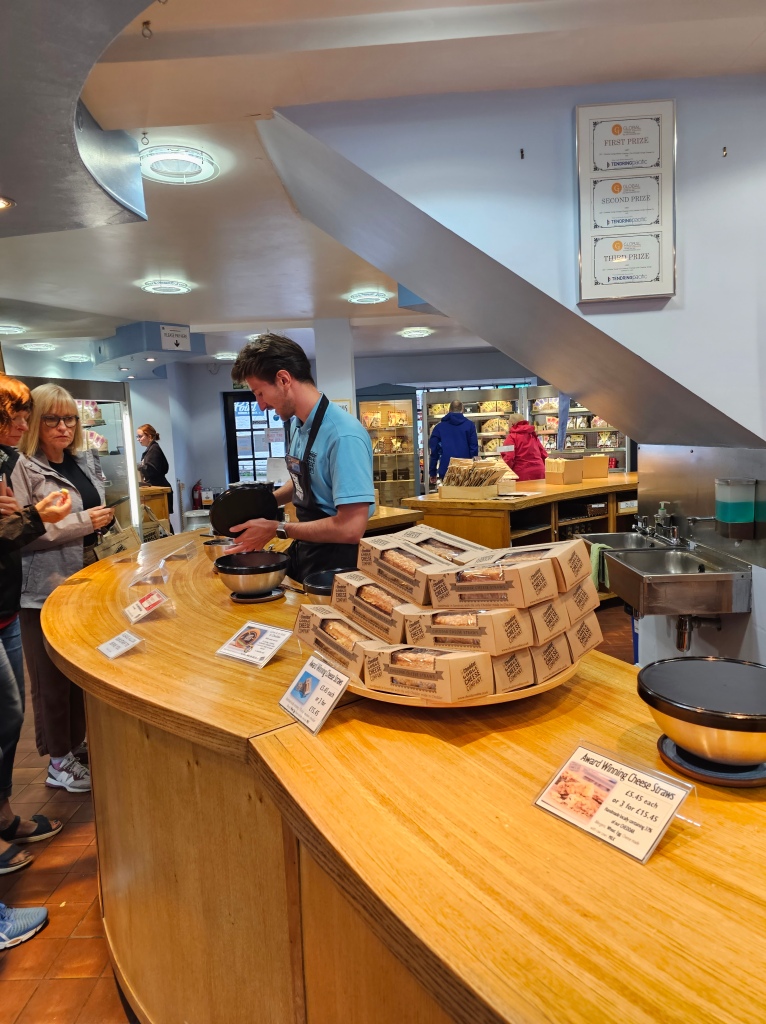

*Helpful travel tip: you can bring cheese in to the US from out of the country, it’s meat that you cannot bring in. We often bring cheese home on our travels.
A Good Night’s Sleep
Cheddar is not a metropolis, it is a sleepy village that sees high traffic on the weekends in summer. With that in mind, the hotel options pool wasn’t very large. However, we found a gem in Gordons Hotel. We were welcomed the moment we walked in by the owner, Rory, and given visiting and restaurant tips. We would have missed visiting Wells if it were not for Rory’s enthusiasm about the cathedral and market.

The hotel offered comfortable rooms with everything you need for a nice night’s rest and a full breakfast in the morning. One of my favorite things about visiting the UK is a nice fry-up in the morning, and Gordons provided one of the best.


In warmer months, there is a pool on offer but as we were visiting towards the end of September, we just enjoyed the last remnants of the garden. There was parking available at the hotel or across the street in the public lot (which is paid) and most everything you will want to see or do in town is walking distance from the doorstep of the hotel.

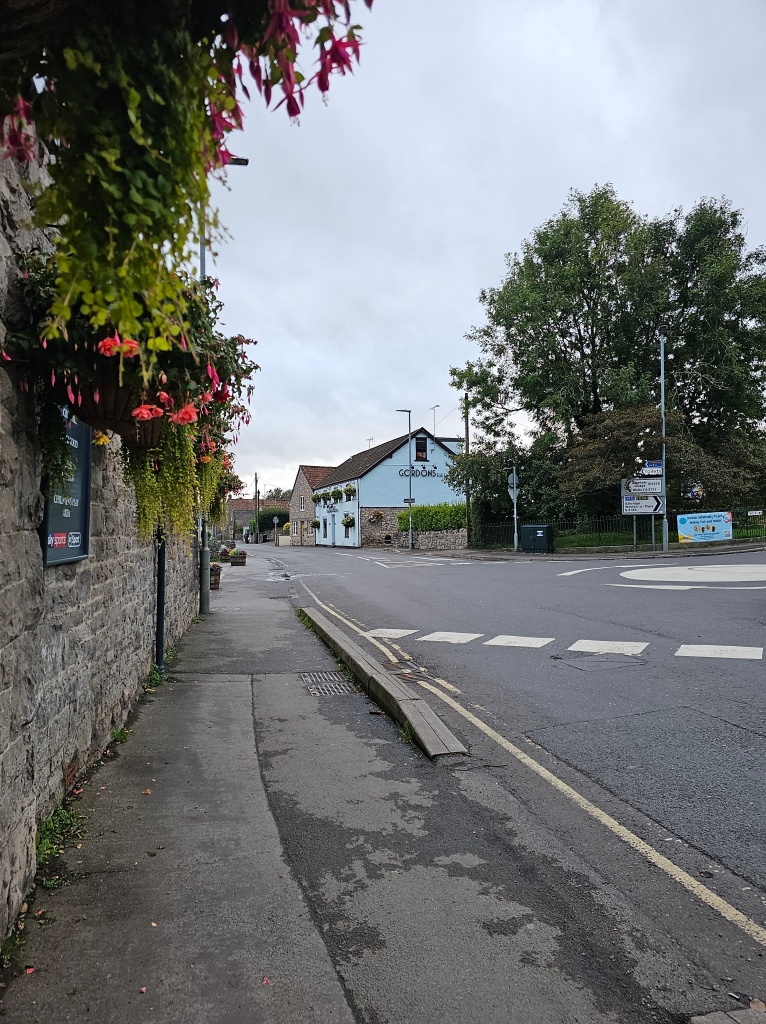

Raise a Pint
I think there is probably some unwritten rule about visiting the UK and not indulging in a pint or two somewhere along the way. Luckily for us, we found a few spots around Cheddar to wet our whistles.

The White Hart was a quintessential village pub. It had both cask and draught beer and cider options, with many more cider options in bottles/cans– this is Somerset, after all. They also had a nice selection of ploughman’s lunches to choose from if you got peckish (and a full menu, as well).

Rory recommended Cabra Taphouse and Wine Bar to us when we checked in for some live music and drinks in the evening. We found a lovely space, with good drinks, and yes- live music. They also have a full menu, including a Sunday Roast!
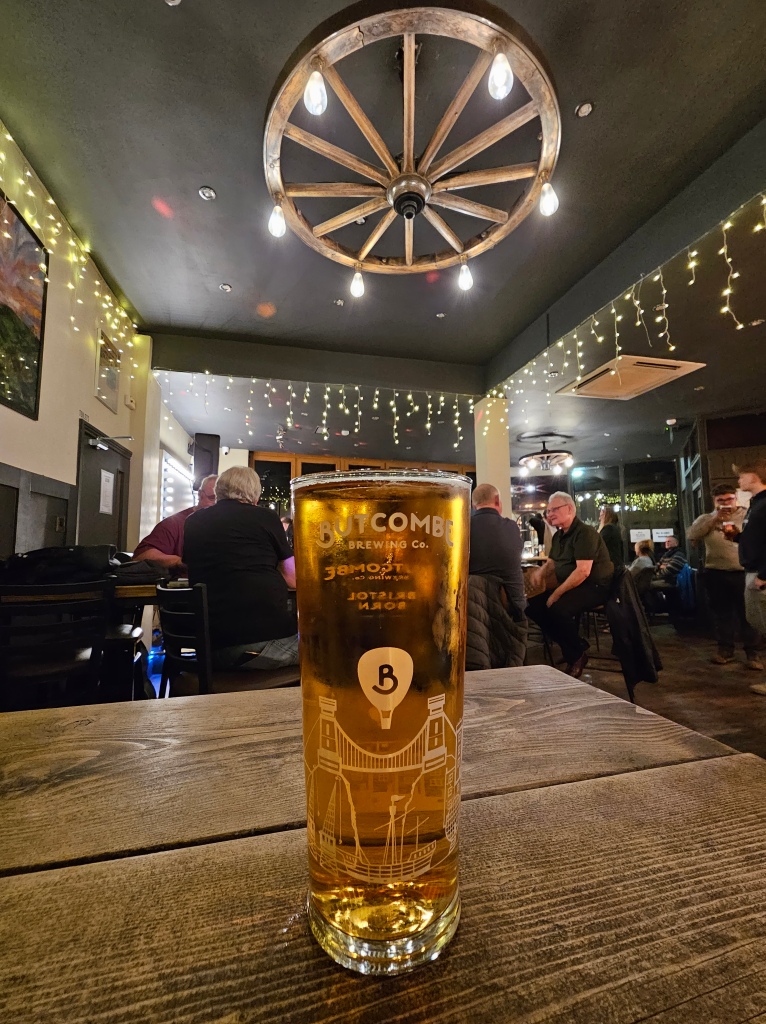
It’s no secret that when we travel, we look for local breweries in the area that we are visiting (hello, Beer Travelers). In Cheddar, there is one local brewery, Cheddar Ales, and you bet your pint that we made it a point to pop in for a tasting.
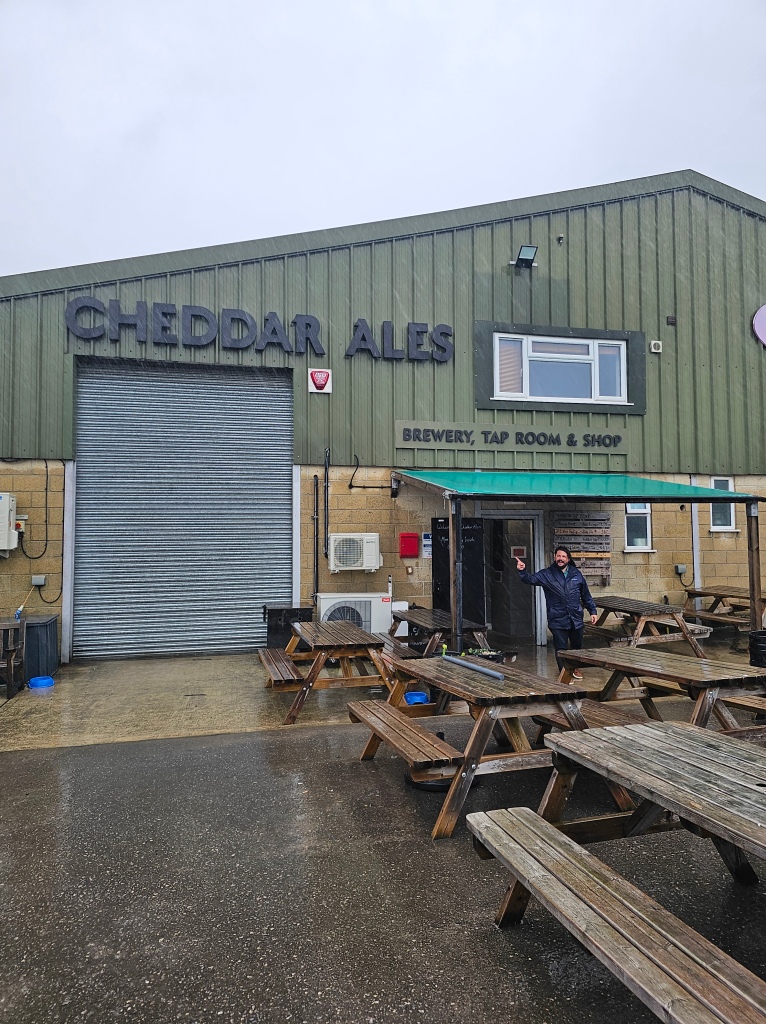
The brewery specializes in cask ale, which I have had plenty of, but I had yet to visit a craft brewery that made cask ale. They also had traditional draught, as well as guest taps. We decided that the most responsible course of action was to get a couple flights and taste our way through all of their offerings.
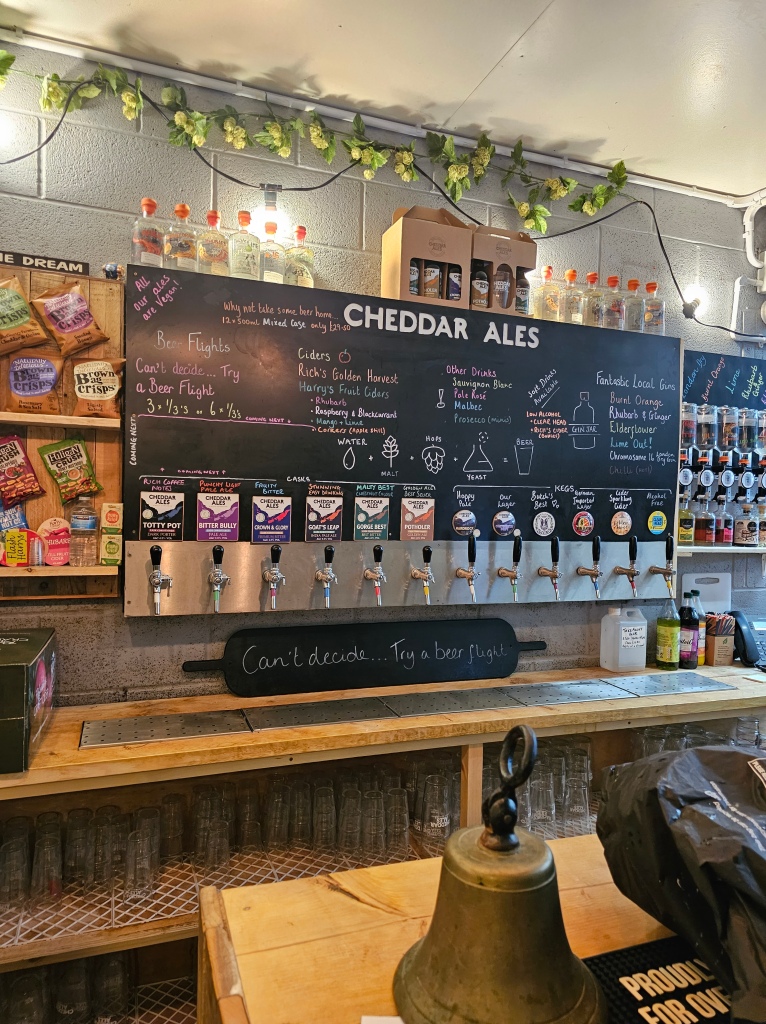

The beer was great, with the Gorge Best Best Bitter being a favorite for me and the Totty Pot Dark Porter knocking it out of the park for David. The staff was lovely and gave us a quick tour and took us back to peek at the cask pouring system, which is always both incredibly interesting and confounding to my American draught system sensibilities.

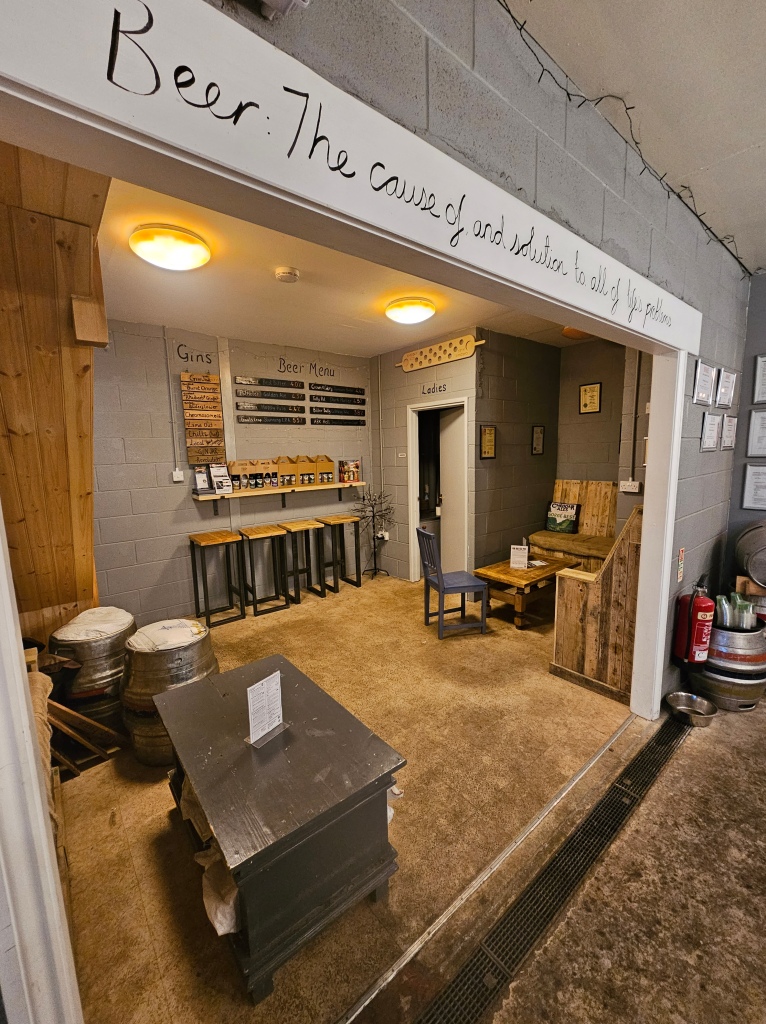
Savor the Flavors
Between the glorious breakfast at Gordon’s, our time in Wells, our pub lunch at the White Hart, and our visit to The Railway Inn (below), we only had time for one full meal in Cheddar but we made it a good one. The Bath Arms is a hotel with an attached restaurant (in the UK they call these Inns). I booked in at the restaurant before we got to Cheddar but was given an extra confidence boost on the choice by Rory, our faithful hotel owner.
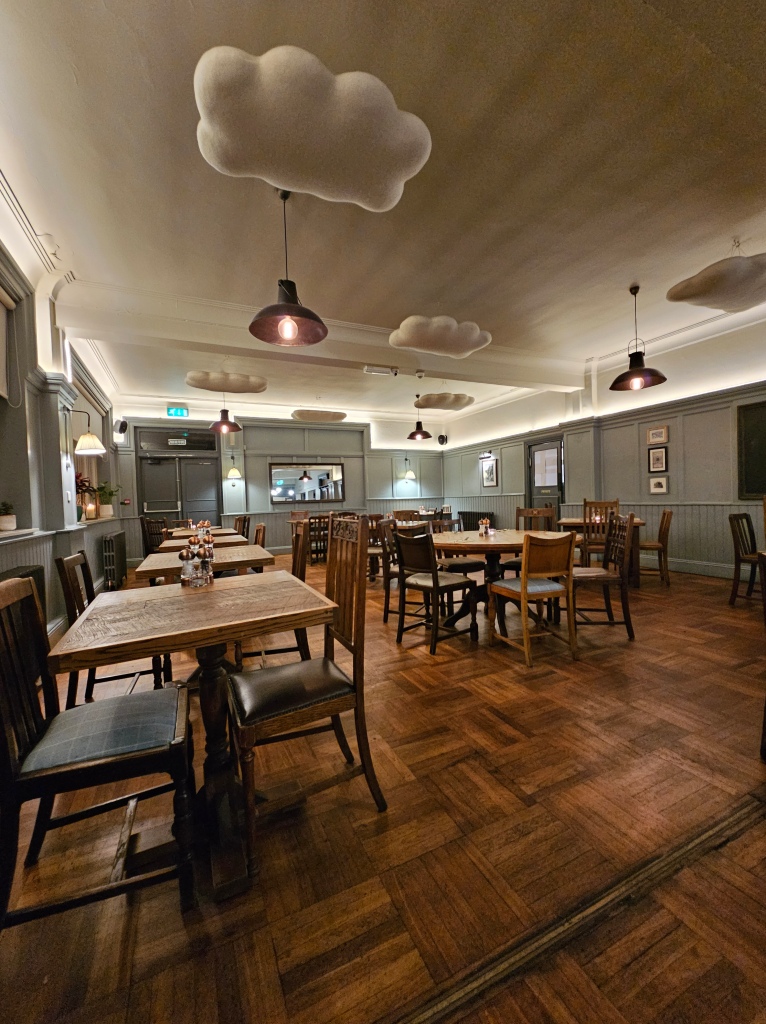
For some reason that I will never be able to grasp, there is a running trope in the U.S. that British food is tasteless and bland. I have spent cumulative months in the British Isles and that has been so far from the truth. The meal at The Bath Arms was no exception, truly a foodie dream.
Seeing as we were in Cheddar, we had to start with a dish that featured the famous cave-aged cheese and we found a hit in the creamy wild mushroom & cave aged cheddar bruschetta, pea pesto and arugula. The dish was earthy and funky and the arugula added a nice bit of spice. I paired it with a Bitter from Cheddar Ales and the pairing was delightful. I am of the opinion that some of the best pairings in the world are things that have grown and matured in the same region, so for me local mushrooms and cheese, with a local beer style is perfection.
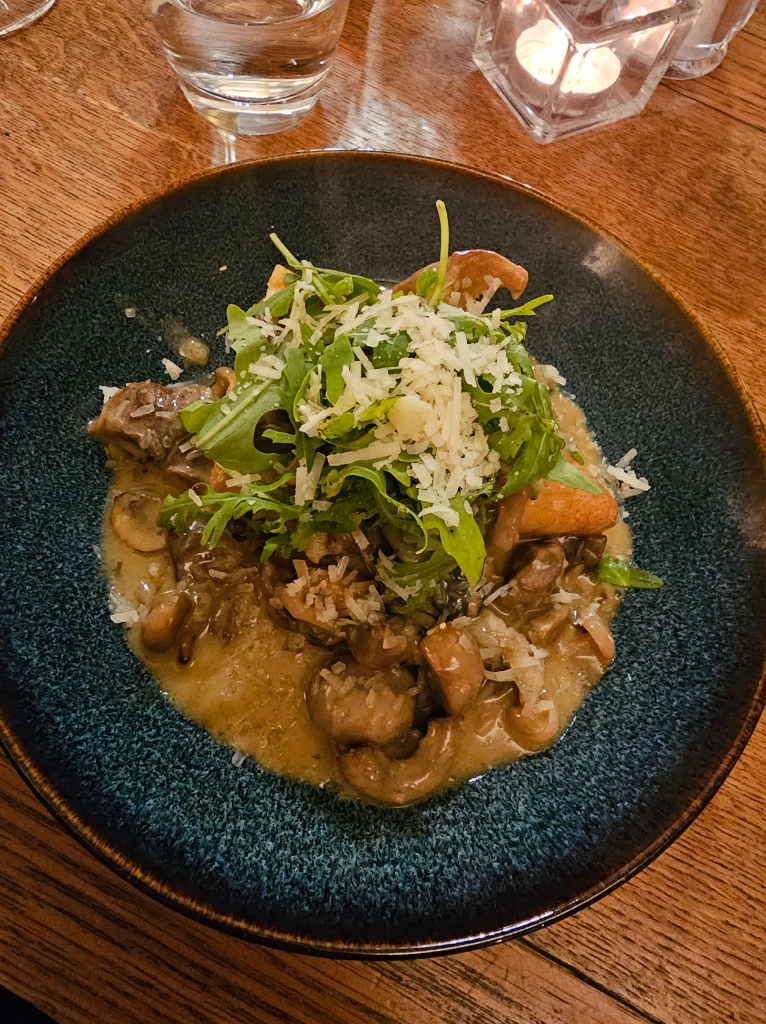
For our mains, David couldn’t resist fish and chips (it was a theme on this trip). His fish was cider battered, a nod to our location in cider country, and included a British favorite– bright green mushy peas.
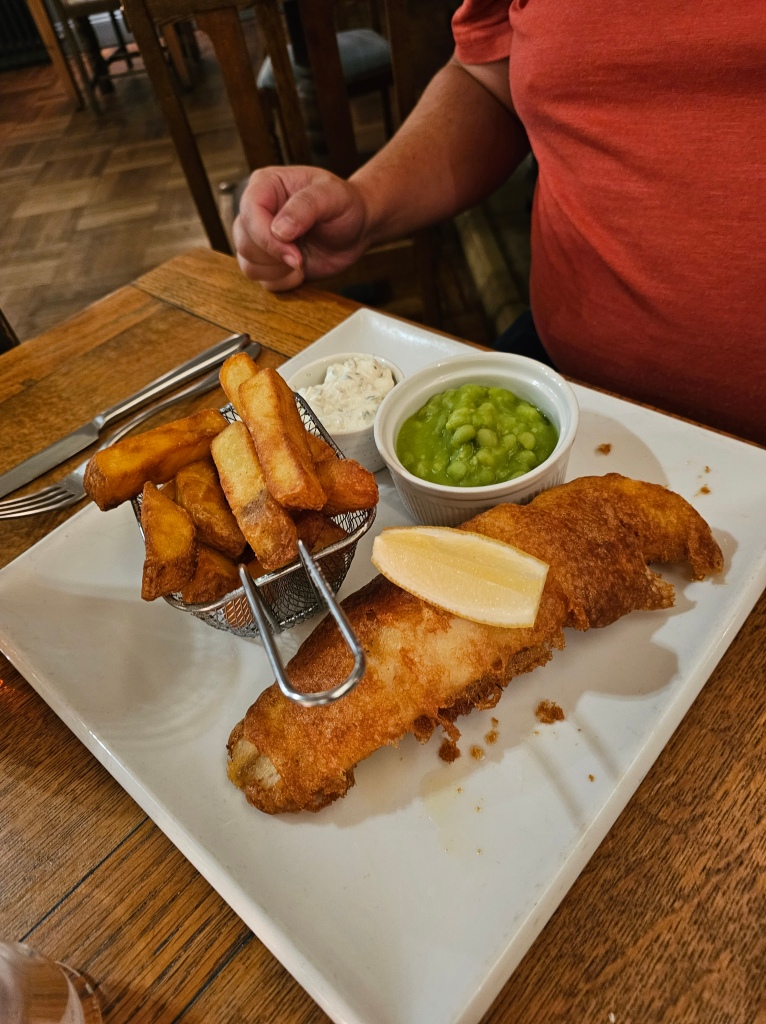
Not having enough mushrooms as a starter, I opted for the pan roasted chicken breast with toulouse sausage, dauphinoise potato, bacon, pea and mushroom fricassee. We were lucky that our hotel was a short, eight minute walk away, as by the time we left we were on the cusp of a beautiful food coma.

Exploring Gough’s Cave
We couldn’t come to Cheddar, eat the famous cave-aged Cheddar, and not visit the cave in which it is aged. The cave system in Cheddar, known as Cheddar Caves, is one of the oldest in the world, with its origins dating back over 500,000 years. These ancient limestone caves have captivated explorers and scientists alike, offering a glimpse into the Earth’s geological history and housing remarkable stalactites and stalagmites that have formed over millennia.
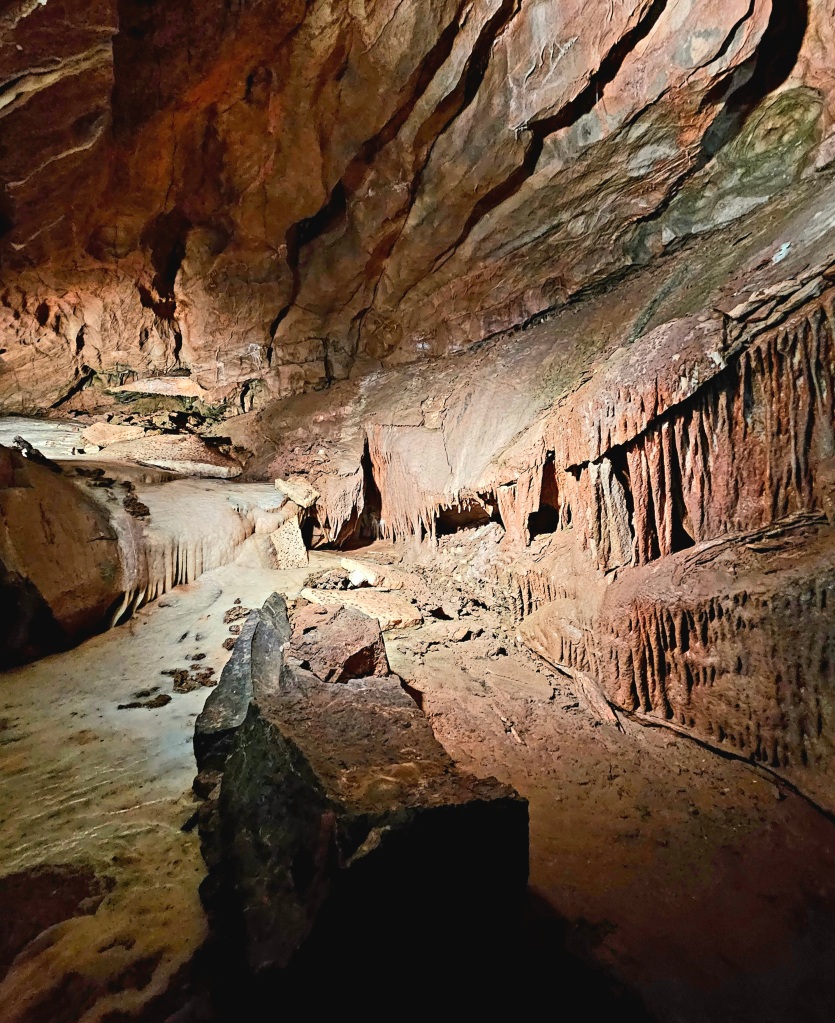
Gough’s Cave is the cave to see in Cheddar. As with the cliffs and other caves, it is made of limestone and chock full of stunning geological formations. These formations include impressive stalactites and stalagmites that have slowly developed over thousands of years, creating a mesmerizing subterranean landscape.

Beyond its geological wonders, Gough’s Cave also holds historical significance as the location where Cheddar Man, Britain’s oldest complete human skeleton, was discovered, offering a fascinating glimpse into prehistoric life in the area.

We explored the caves chambers and found the area where cheddar from the Cheddar Gorge Company was being aged. There are caves outside of Cheddar where other companies age their cheese but this is the only place where you can see the famous cheese in a cave.

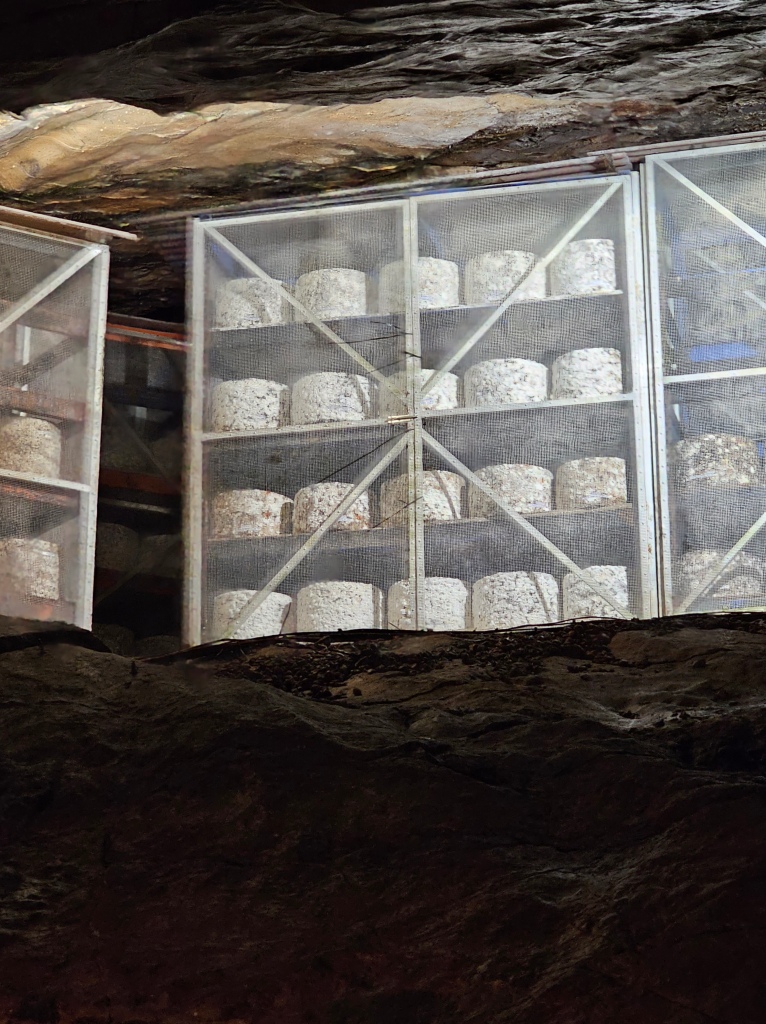
Entry to Gough’s Cave is sold as a day package for £22.95 with an audio guide and entry also included to The Museum of Prehistory, Cox’s Cave featuring Dreamhunters: The Early Adventures of Man, Jacob’s Ladder and the Lookout Tower, Cliff-Top Walk, and Beyond the View (a cinematic experience).
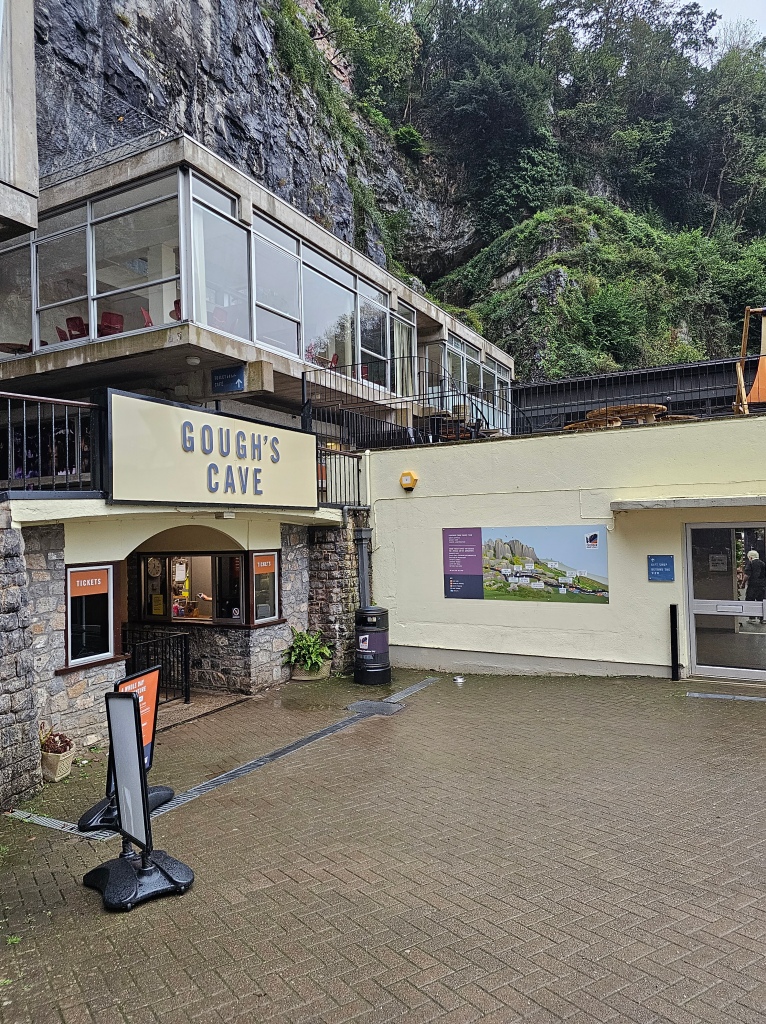
We took advantage of a the added extrances and visited The Museum of Prehistory and peeped the Beyond the View movie. The movie was worth a few minutes of our time but it was defintely made for a younger audience. The museum offers a captivating journey through time, showcasing artifacts and exhibits that provide insights into the rich history of the region. The museum’s collection includes items from the Stone Age to the Iron Age, shedding light on the prehistoric communities that once inhabited the Cheddar Gorge area. There is also more in-depth information about Cheddar Man that isn’t covered in Gough’s Cave.



A Trip to Cider Country
Somerset is celebrated as one of the cider capitals of the world, with a heritage dating back centuries. The region’s temperate climate and fertile soil provide ideal conditions for apple cultivation, and the local apple varieties, such as the bittersweet and bittersharp apples, are well-suited for crafting high-quality cider.

Somerset cider is typically made using a blend of these apple varieties and showcases a wide range of flavors and styles, from crisp and refreshing to rich and complex. The county is home to numerous cider houses, both large and small, each with its unique methods and recipes.
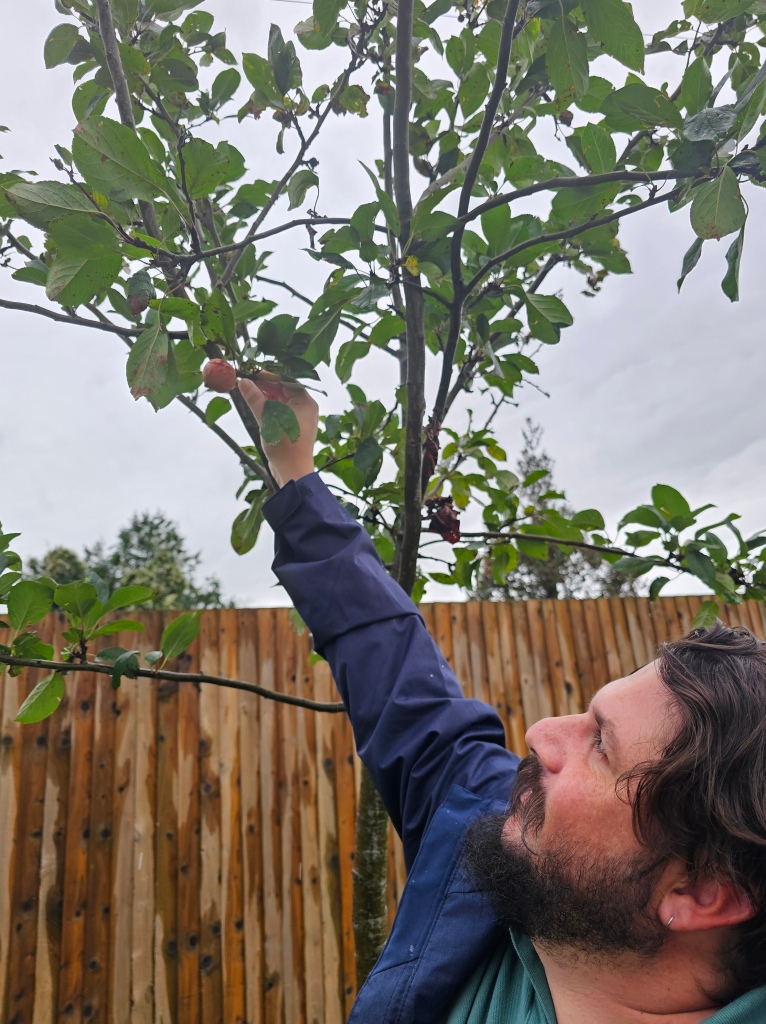
While in this part of the country, we decided that we had to visit at least one cidery. Time really wasn’t on our side in terms of visiting a smaller producer, as most seemed to be closed during the week, so we made the call to visit one of the largest producers of cider in the UK.
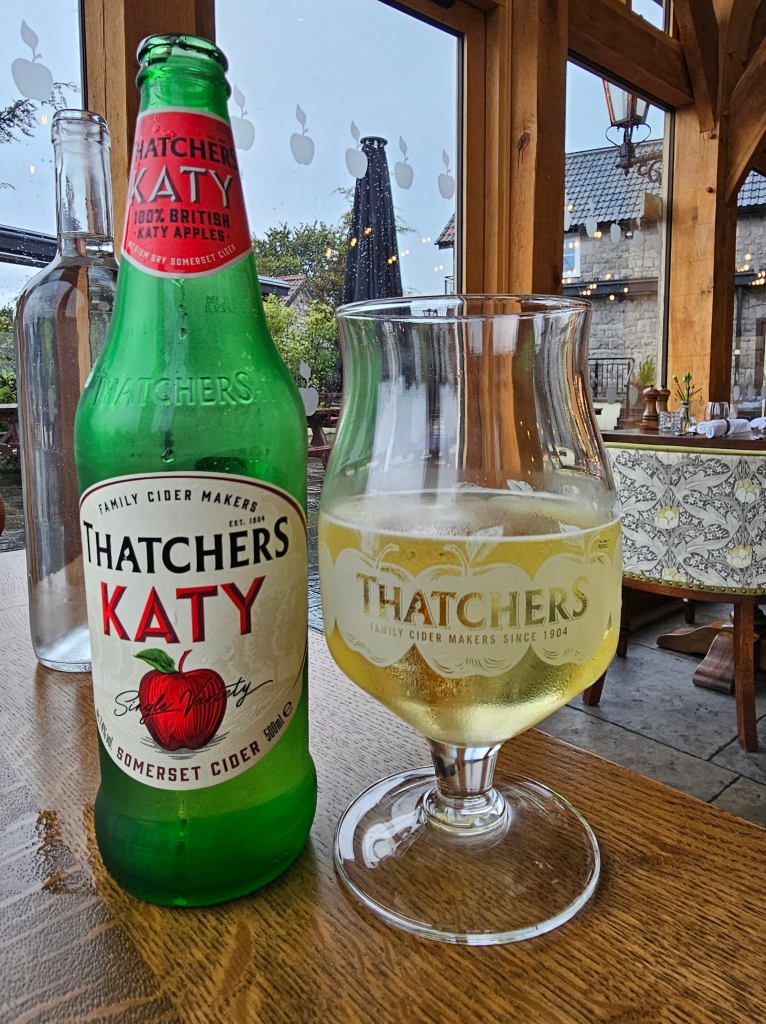
Thatchers Cider Company, situated in the heart of Somerset has a rich history that dates back to 1904 when William John Thatcher planted apple trees on their family farm in Sandford. Over more than a century, the Thatcher family’s dedication to apple cultivation and cider production has made them a cornerstone of the Somerset cider-making tradition. The company is now led by the fourth generation of Thatchers, with Martin Thatcher at the helm, who has focused on sustainable practices and innovation in cider-making, ensuring their products are enjoyed far beyond the local region. Thatchers is renowned for its commitment to using locally grown apples from Somerset orchards, making them a cherished name in the world of cider and a symbol of the rich agricultural heritage of the region.

We didn’t book the tour at Thatchers, which is 2 hours and costs £15.00, but we did have a nice meal and tasting at their onsite restaurant The Railway Inn. The restaurant could not have had a more inviting interior and even though we arrived just before the end of their lunch seating, they still sat us and allowed us to have the full menu experience.
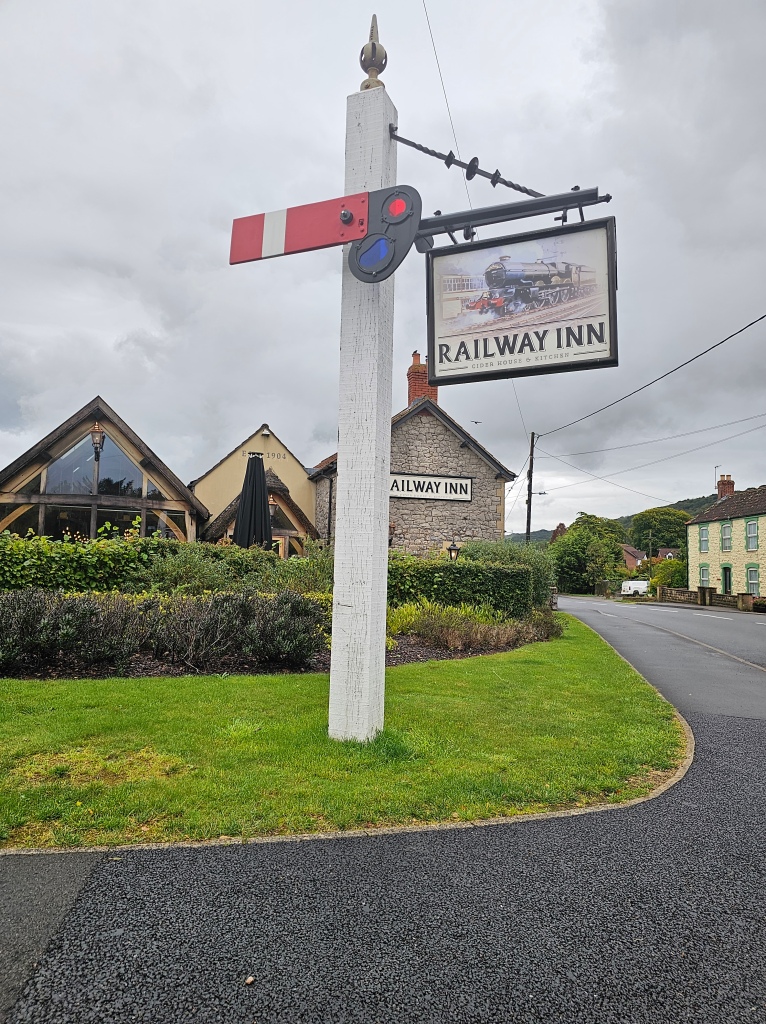
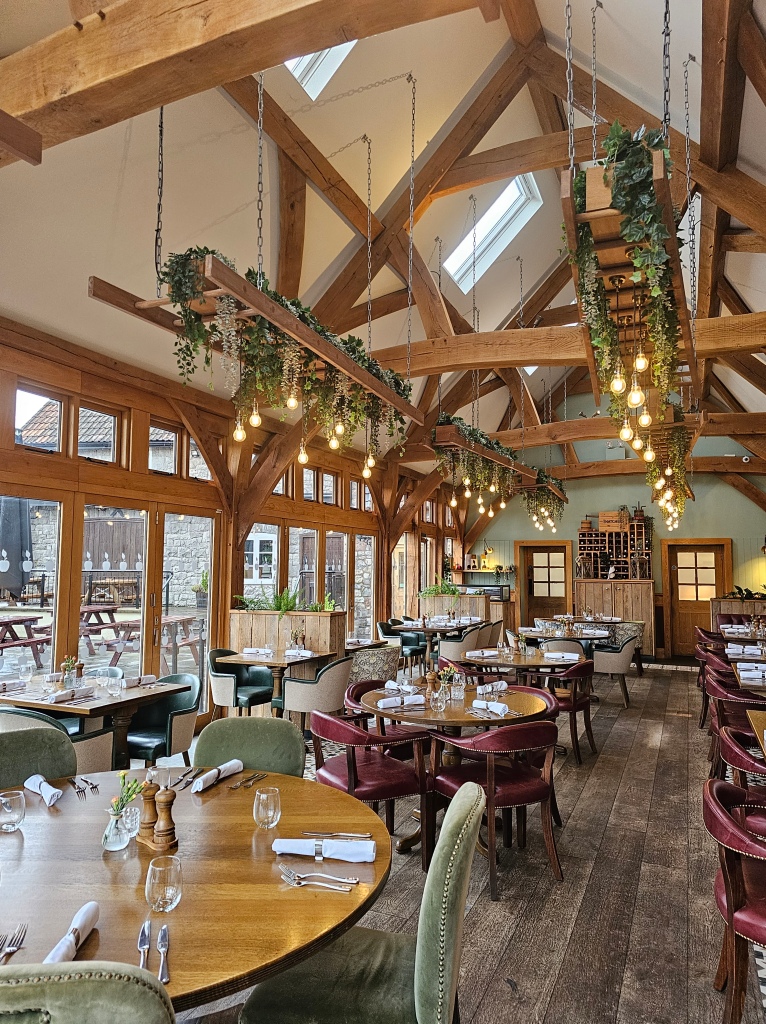
The building is the site of a 140 year old country pub that was restored and returned to its former glory. The food emphasis is on local ingredients with regional and international flavors. The menu includes a section that offers pairing recommendations for the ciders, something my Cicerone heart really appreciated. David went with a nice fish and chip dish, and I couldn’t resist a filling steak lunch. The food was lovely and the cider pairings were sublime.

Until Next Time
Visiting Cheddar was truly a bucket-list trip for me. While we packed a lot in and sated the dream of visiting, there is so much more to see, do, eat, and drink. We’ll be back, hopefully sooner than later.
